CLIMA Poster References
A full list of citations for figures found on the Penn State's Center for Climate Risk Management (CLIMA) poster.
Download: psu-clima-poster.pdf
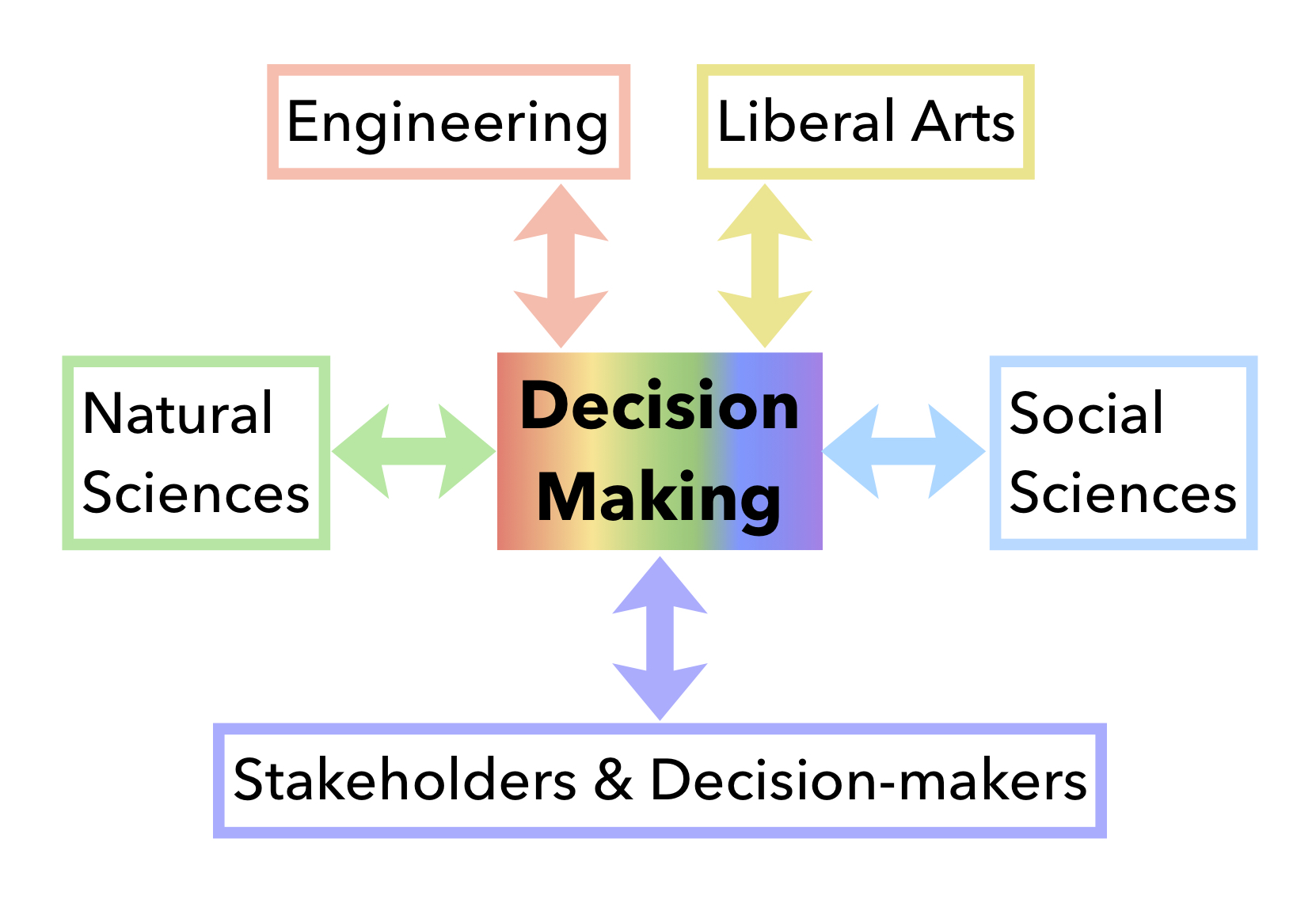
Analyzing and designing climate risk management strategies requires a convergent research approach to link often disjointed disciplines.
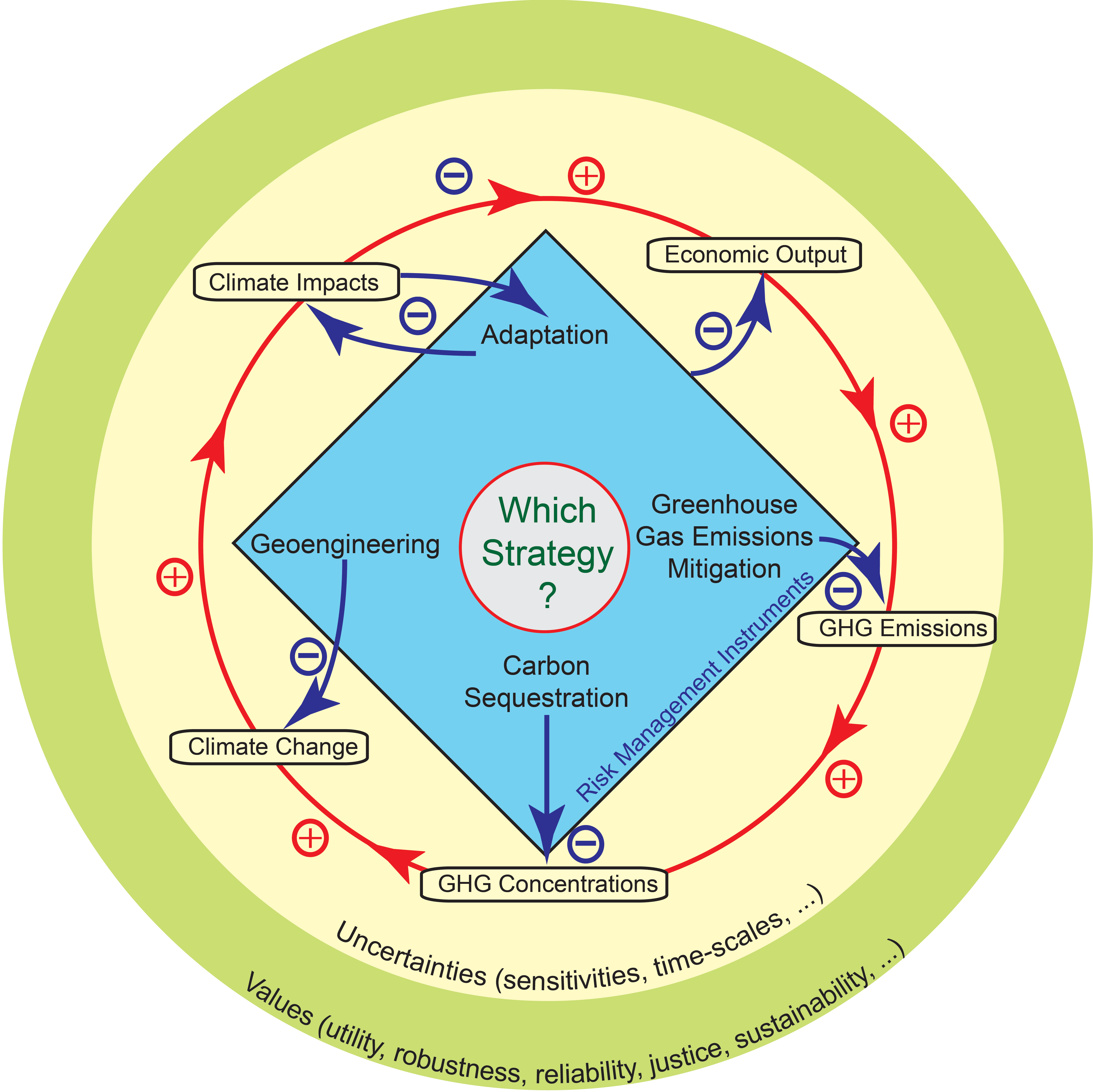
Climate risk management requires choosing a strategy to navigate complex trade-offs between values under deep and dynamic uncertainties in a highly nonlinear coupled system.
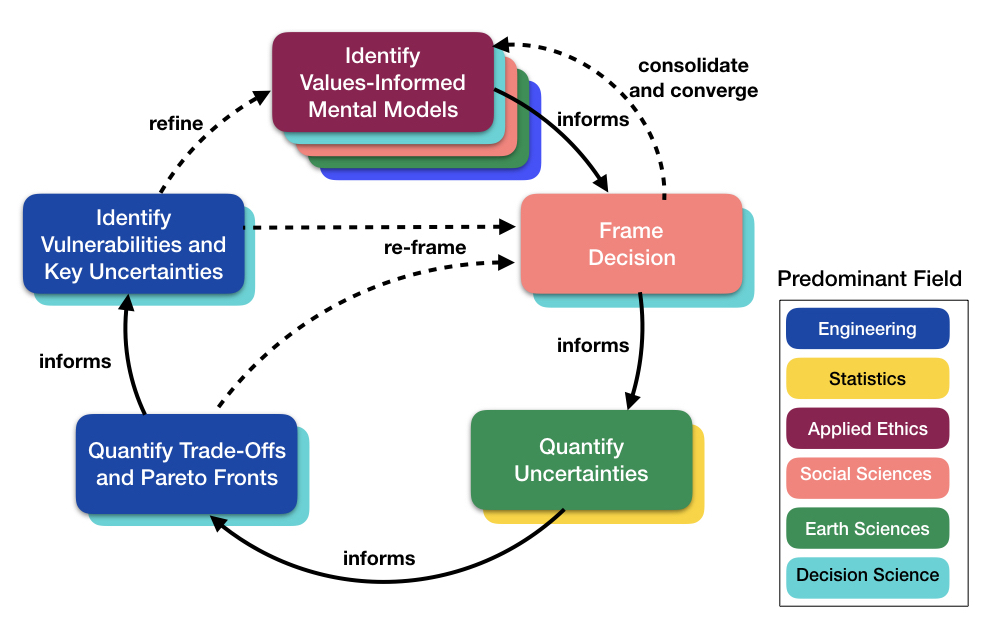
Assessing and designing climate risk management strategies requires an iterative approach that links concepts and tools from a wide range of disciplines.
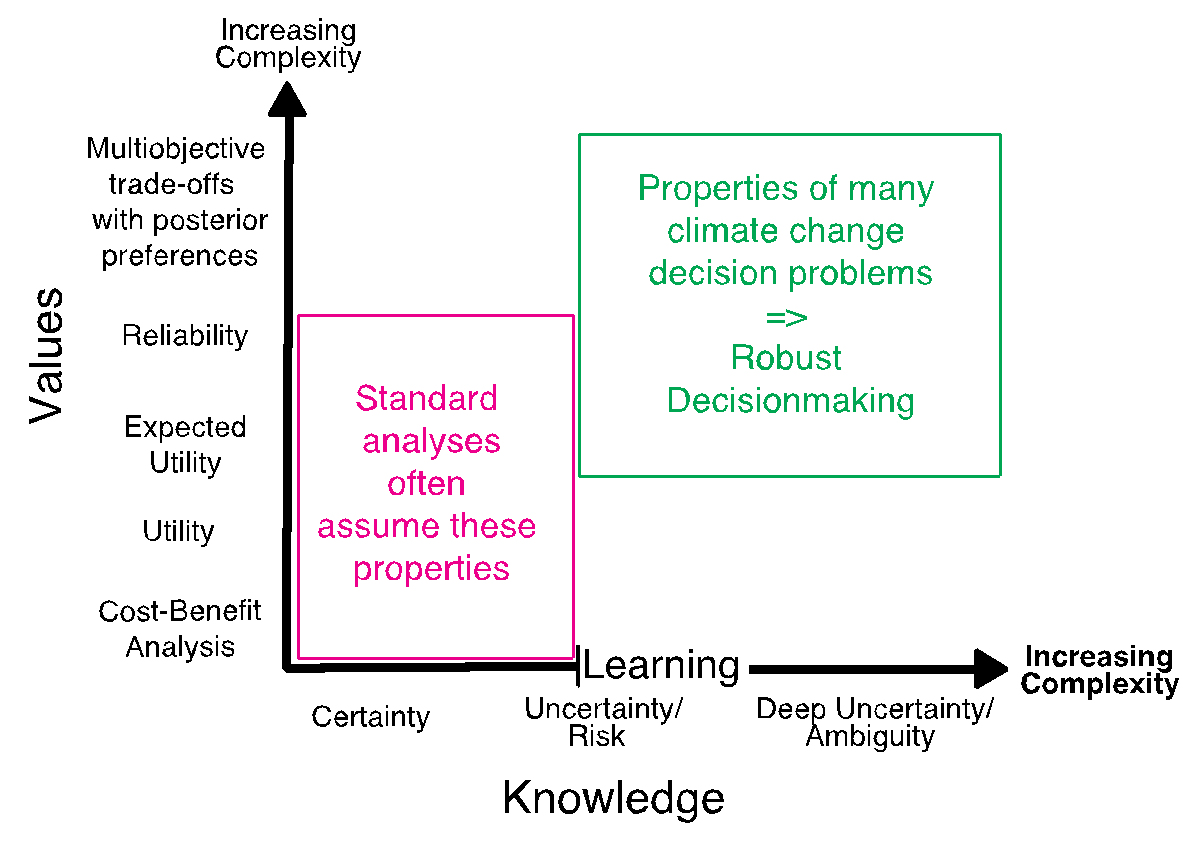
Analyzing and designing climate risk management strategies requires to develop and use methods that are in the appropriate epistemic-ethical location of the decision-problem. Figure modified from Singh, Riddhi, Patrick M. Reed, and Klaus Keller. 2015. “Many-Objective Robust Decision Making for Managing an Ecosystem with a Deeply Uncertain Threshold Response.” Ecology and Society 20 (3). https://doi.org/10.5751/ES-07687-200312.
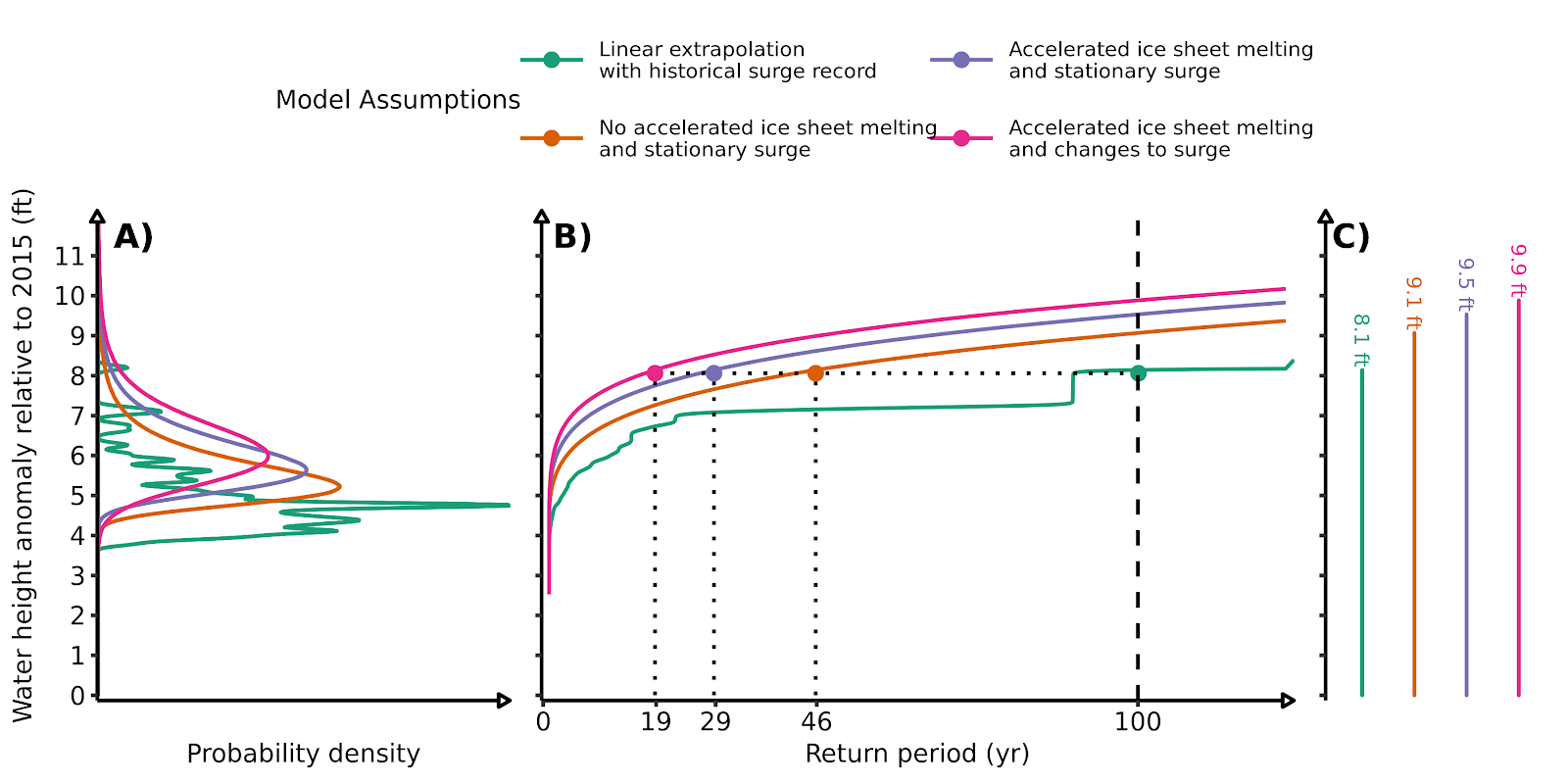
Structural uncertainty can drastically impact projected hazards and risk management strategies. Figure redesigned from Srikrishnan, Vivek, Yawen Guan, Richard S. J. Tol, and Klaus Keller. 2019. “Fossil Fuel Resources, Decarbonization, and Economic Growth Drive the Feasibility of Paris Climate Targets.” arXiv [stat.AP]. http://arxiv.org/abs/1908.01923 and distributed under the Creative Commons Attribution 3.0 United States license.
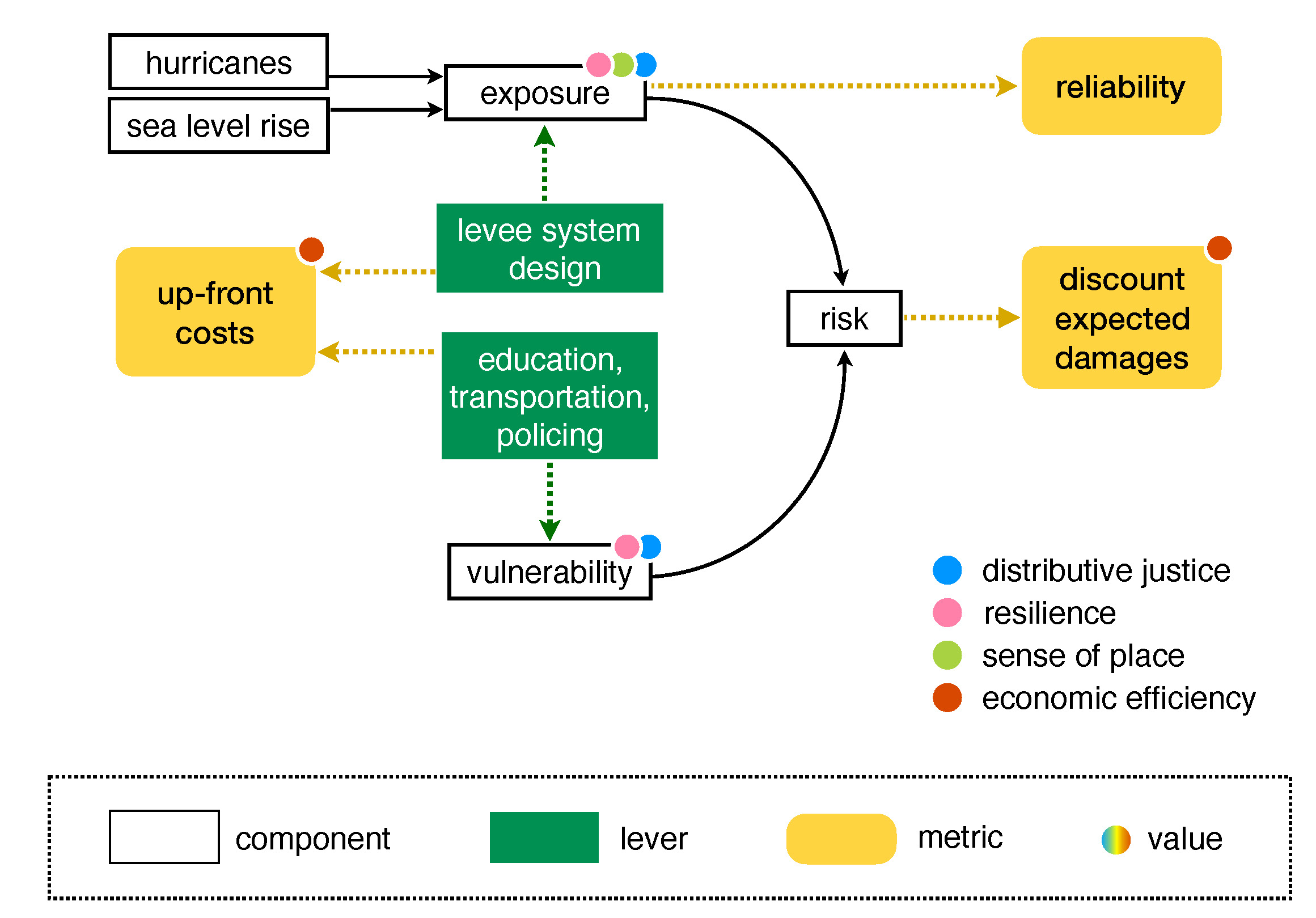
Example of a values-informed mental model representation of coastal climate risk management. Results synthesized from Bessette, Douglas L., Lauren A. Mayer, Bryan Cwik, Martin Vezér, Klaus Keller, Robert J. Lempert, and Nancy Tuana. 2017. “Building a Values-Informed Mental Model for New Orleans Climate Risk Management.” Risk Analysis, January. https://doi.org/10.1111/risa.12743 and Mayer, Lauren A., Kathleen Loa, Bryan Cwik, Nancy Tuana, Klaus Keller, Chad Gonnerman, Andrew M. Parker, and Robert J. Lempert. 2017/1. “Understanding Scientists’ Computational Modeling Decisions about Climate Risk Management Strategies Using Values-Informed Mental Models.” Global Environmental Change 42: 107–16. https://doi.org/10.1016/j.gloenvcha.2016.12.007.
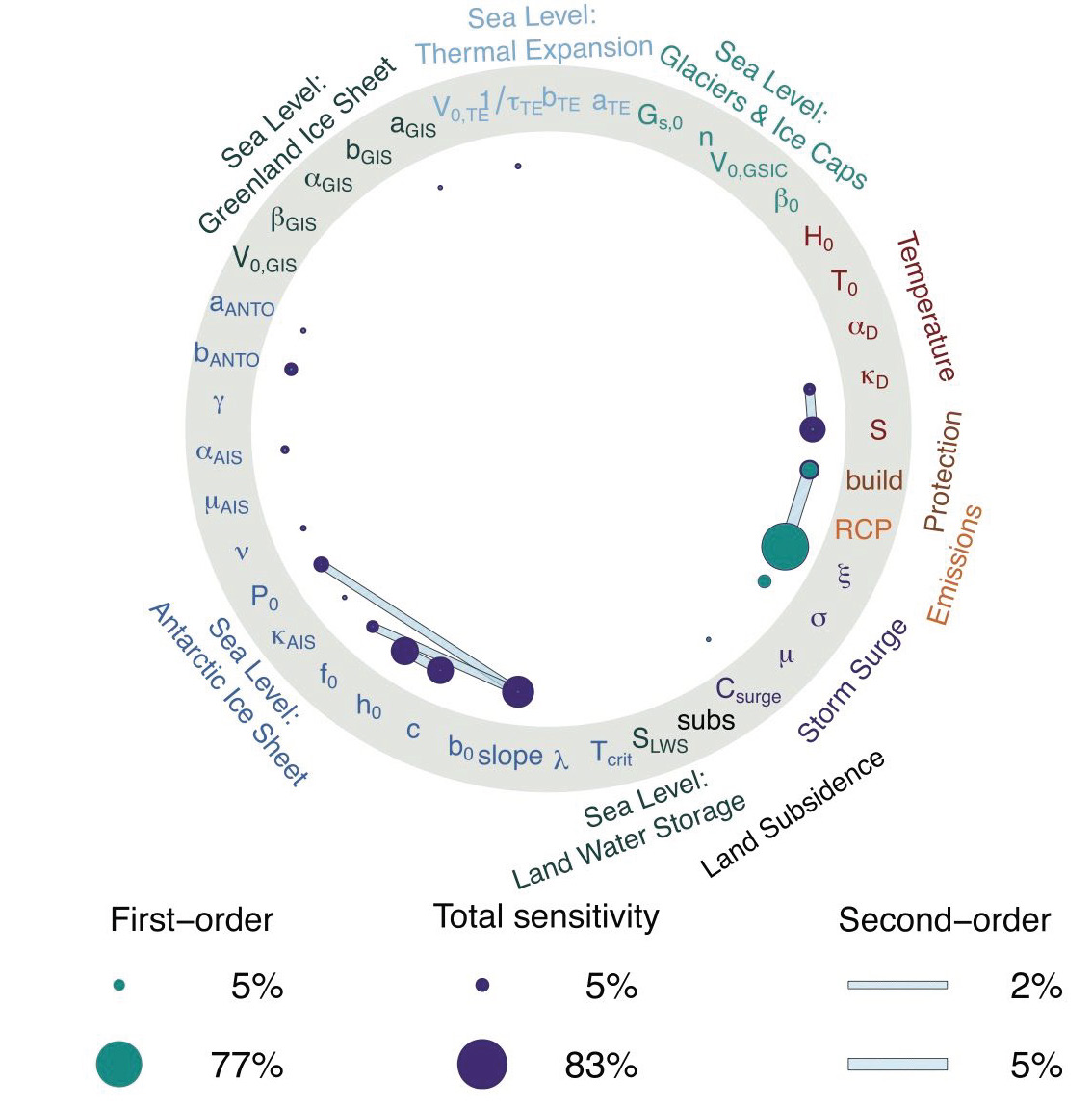
Quantification of the relative importance of key considered uncertainties for projected flood risk over the next few decades. The size of the filled purple nodes represents the total effect of the parameter. The width of the connecting lines represents the importance of parameter interactions.Figure taken from Wong, Tony E., and Klaus Keller. 2017. “Deep Uncertainty Surrounding Coastal Flood Risk Projections: A Case Study for New Orleans.” Earth’s Future, October. https://doi.org/10.1002/2017EF000607 and distributed under the Creative Commons Attribution-NonCommercial-NoDerivatives 4.0 International (CC BY-NC-ND 4.0) license.
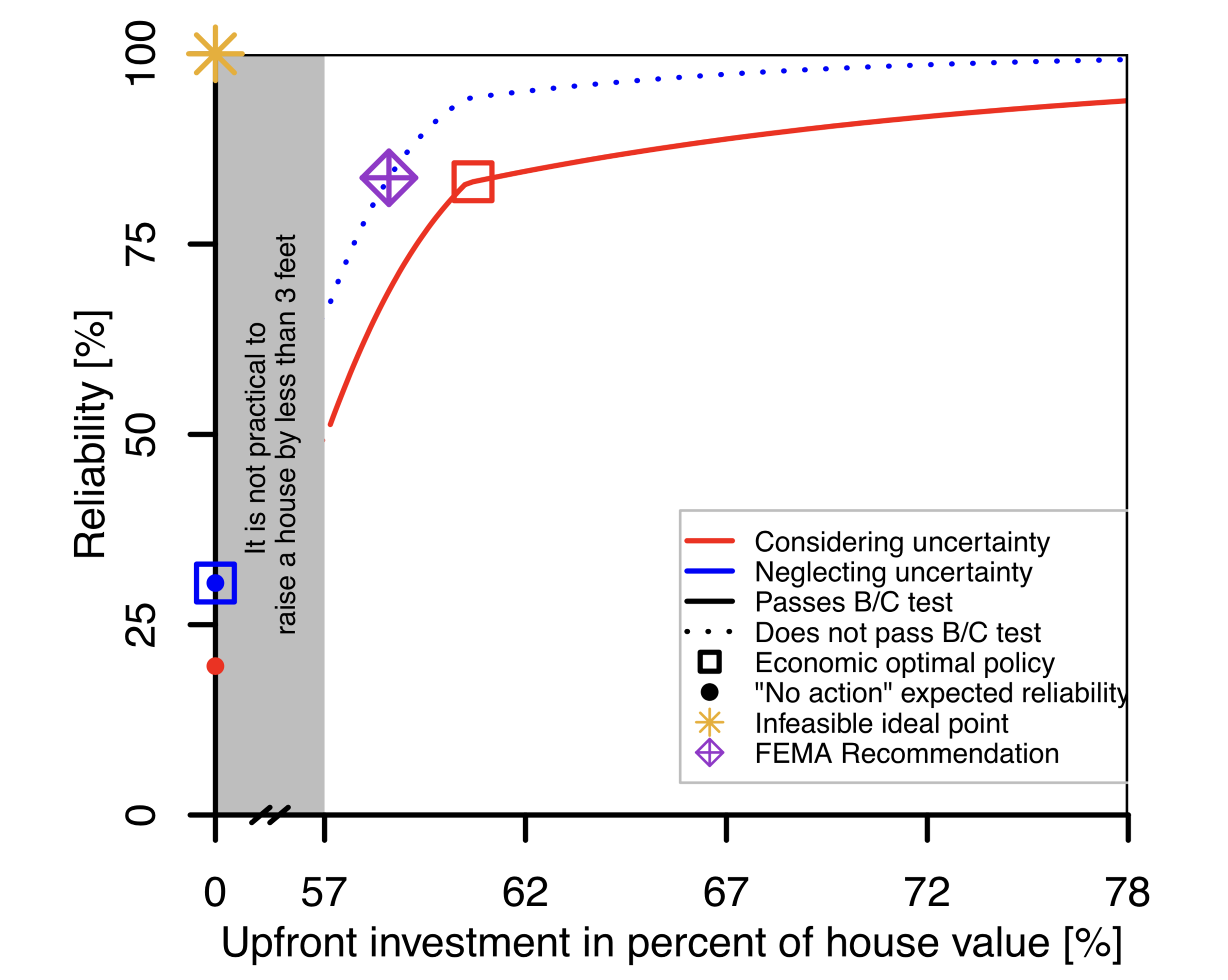
Trade-offs between the upfront cost and reliability with and without uncertainty quantification. Trade-off under the considering-uncertainty and ignoring-uncertainty assumptions are shown by red and blue, respectively. Along each line, the dashedparts indicate that the policy does not pass the cost-benefit test (i.e. the benefit-to-cost ratio is less than one). Heightening policies of 0-3 feet are blocked by the gray area as we assume that it is impractical to elevate a house b less than three feet. “not elevating” policies are shown by dots and the optimal elevations are shown by squares. Figure taken from Zarekarizi, Mahkameh, Vivek Srikrishnan, and Klaus Keller. 2020. “Neglecting Uncertainties Leads to Suboptimal Decisions About Home-Owners Flood Risk Management.” arXiv [stat.AP]. http://arxiv.org/abs/2001.06457.
